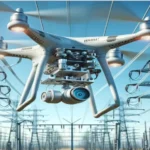Drones have evolved from being a tool for military operations and aerial photography to becoming a valuable educational resource. Educational drones are now transforming classrooms by offering students engaging and interactive learning experiences. They are bridging the gap between theoretical knowledge and real-world application, particularly in STEM (Science, Technology, Engineering, and Mathematics) education. This article explores how educational drones are changing the way we approach learning and the immense potential they bring to education.
Enhancing STEM Education
The most significant impact educational drones have had is in the realm of STEM education. By integrating drones into the curriculum, teachers can bring abstract concepts like physics, aerodynamics, coding, and engineering to life. Instead of just reading about theories in books, students now get the chance to experiment with drones, analyze data, and see how the science works in action.
For example, students can learn about flight dynamics by piloting drones, observing their movement patterns, and analyzing data such as speed, altitude, and flight path. This hands-on approach helps solidify theoretical knowledge and encourages critical thinking. Moreover, drones are also excellent tools for teaching coding and programming, enabling students to write flight plans, program drone behavior, and even create automated missions.
Fostering Creativity and Problem-Solving
Educational drones promote creativity and problem-solving skills. Students aren’t just learning from drones—they are creating, modifying, and experimenting with them. Whether it’s building a drone from scratch or designing unique flight patterns, drones offer endless possibilities for students to explore their creativity.
Drones also encourage students to work on real-life problems. For instance, they can be used to map geographical areas, conduct environmental surveys, or collect data for scientific experiments. The practical applications help students understand the importance of problem-solving in real-world scenarios.
Promoting Teamwork and Collaboration
Another benefit of using educational drones is the emphasis on teamwork. In a classroom setting, students often work in teams to control and program drones. They must communicate, collaborate, and divide responsibilities to achieve common goals. This fosters essential soft skills such as leadership, teamwork, communication, and conflict resolution.
By working in groups, students also learn how to take on different roles, whether it’s as a pilot, engineer, or data analyst. These collaborative experiences build a strong foundation for skills that are crucial in both academic and professional settings.
Preparing Students for Future Careers
Educational drones are not only useful for academic growth but also for career preparation. As industries like agriculture, logistics, construction, and filmmaking increasingly adopt drone technology, students with experience in drone operation will have a competitive edge in the job market. The growing demand for drone operators and drone-related services means students who gain proficiency with drones can step into these roles with confidence.
Additionally, drones teach students about emerging technologies such as AI, machine learning, and robotics, all of which are expected to play a significant role in the future job market. Educational drones can thus serve as a stepping stone for students to enter fields that require technical expertise and innovation.
Applications in Other Subjects
Beyond STEM, educational drones are making a difference in other subjects as well. In geography, drones are used to study topography and geography, mapping areas, and monitoring climate change. In history, drones can be used to explore archaeological sites and create virtual tours of historical landmarks. The possibilities are endless, and drones offer an innovative way to engage students in diverse subjects.
The Future of Educational Drones
The potential for educational drones is vast and still expanding. As drone technology continues to advance, new and improved models will provide even more opportunities for interactive learning. Future drones may feature augmented reality (AR) and virtual reality (VR) integration, enabling students to interact with the environment in new ways. For example, students may use AR to explore 3D models of historical sites or conduct scientific experiments using virtual simulations.
Furthermore, as drones become more affordable, educational institutions worldwide will have greater access to this technology, making it an accessible tool for all students, regardless of their socioeconomic background.
Conclusion
Educational drones are not just a passing trend; they represent the future of hands-on learning. They empower students to engage with technology, develop critical skills, and gain real-world experience in an interactive environment. As drones become more integrated into classrooms, they will continue to shape the way students learn and prepare them for the challenges and opportunities of tomorrow’s workforce. With their ability to foster creativity, teamwork, and problem-solving, educational drones are undeniably creating a new era in learning.




